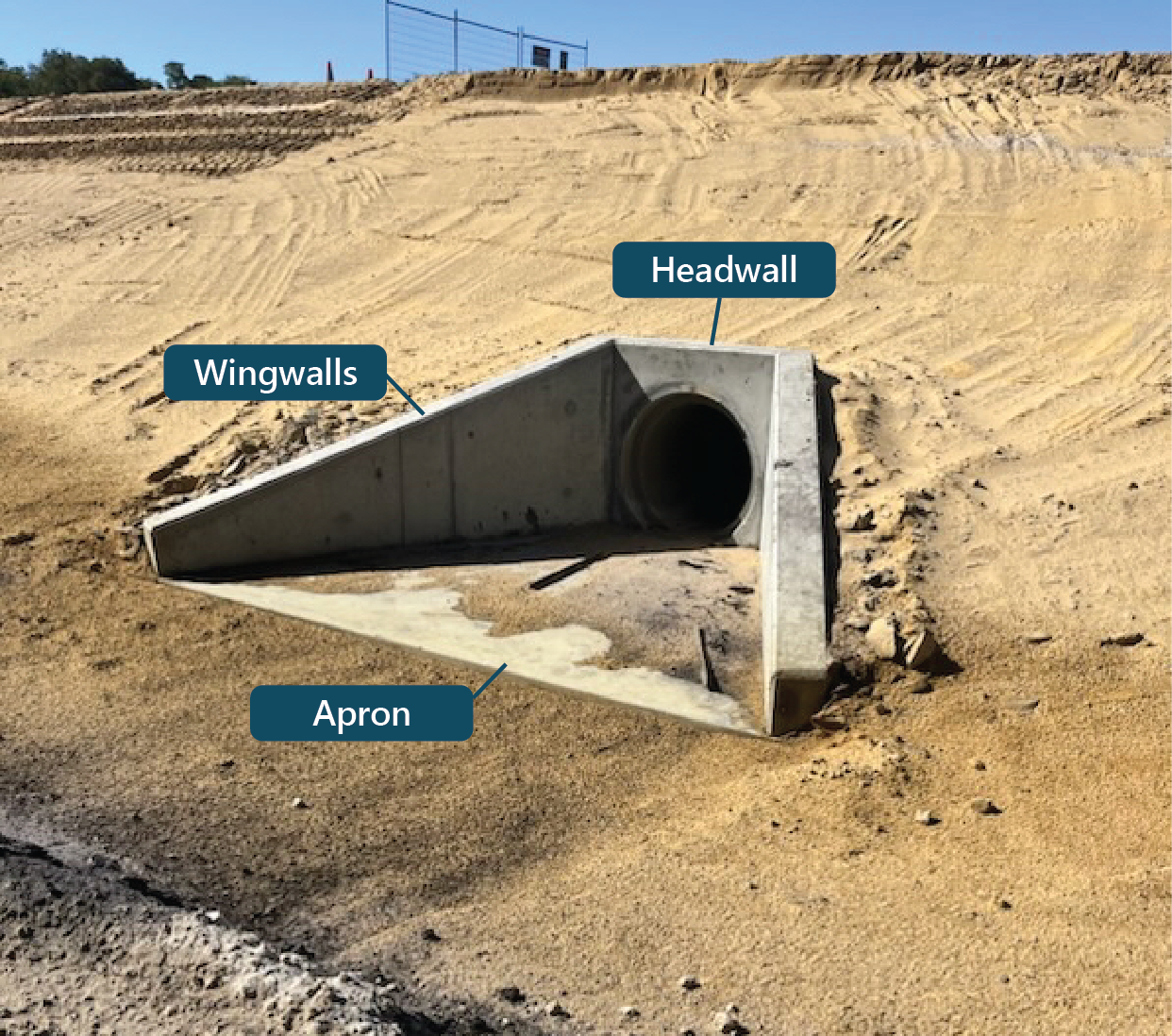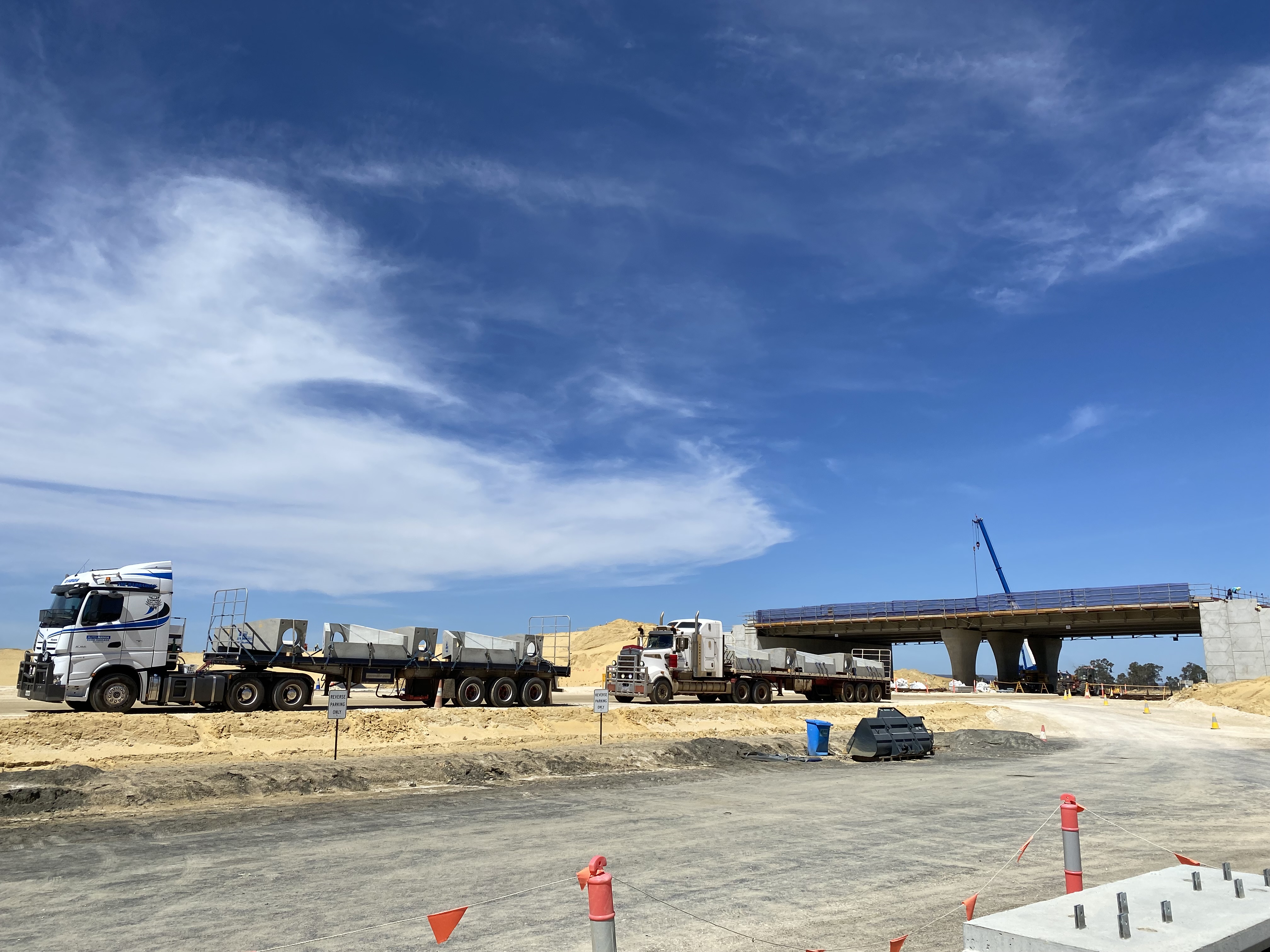Making headway on BORR with concrete headwalls
'Headwalls are an essential part of the project’s drainage network as they prevent the erosion of a culvert’s end and surrounding area'
Published: 06 April 2023, Updated: 06 April 2023
North of the Raymond Road interchange, ten precast concrete headwalls have been delivered to site, which will be installed along the road drainage network. These are just some of the 300 headwalls that will be installed along the alignment between the Paris/Clifton Road interchange and the ‘mega-bridge’ at Boyanup-Picton Road.
Headwalls are placed at either side of a culvert and are designed to stop materials from washing into the culverts and maintaining the flow of water, as well as retaining the earth surrounding them.
“Headwalls are an essential part of the project’s drainage network as they prevent the erosion of a culvert’s end and surrounding area”, said Luke Senior, Section Manager.
Each headwall has three elements (pictured below). A base slab which is referred to as the apron, a headwall that spans across the top of the culvert, and wing walls that extend on either side and taper down to the ground level.

Three elements of a headwall
The precast headwalls were supplied by a local manufacturer, MJB Industries, an Australind based business specialising in producing concrete pipes and precast products. Using a local company resulted in a reduction of cost and onsite labour time, as they were able to perform the casting of the end treatments offsite.

Headwalls being delivered to the Raymond Road construction site
Page last reviewed: | Last updated: